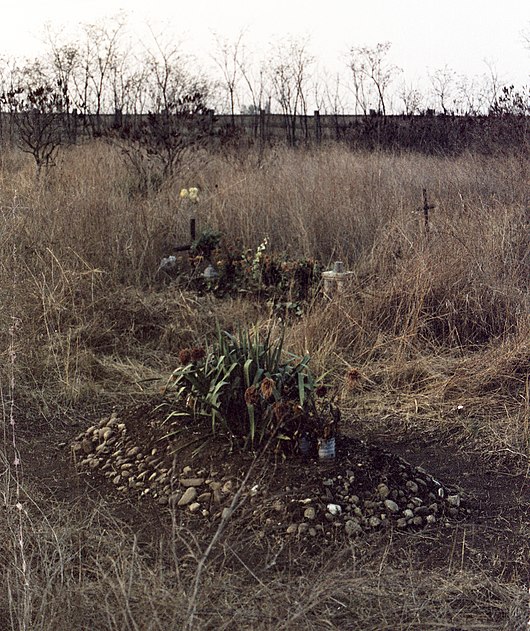Retaliation after the fight – Section 301 of the New Public Cemetery, Budapest
Fact of the Hungarian figure „Josef Bem Square – 1956″
Part of the „Dreaming about the democracy” topic
The revolution that erupted in the autumn of 1956 in Budapest and several provincial towns was violently crushed by the Hungarian communists with the help of Soviet forces. After taking power, János Kádár, in an effort to consolidate his regime and intimidate society, implemented a brutal wave of reprisals. The Hungarian People’s Republic, under Kádár’s leadership, issued three decrees that simplified criminal procedures, introduced summary executions, and expedited trial processes. The State Protection Services (ÁVH) were given unchecked authority to arrest anyone, often on false charges or without justification, and did so in large numbers. The post-revolution trials led to 231 executions, some of which included individuals under the age of 18. In addition to these executions, many were deported to labor camps, and hundreds of thousands of people fled Hungary to escape the oppressive retaliation.
Section 301 of the New Public Cemetery in Budapest is a stark symbol of this dark chapter of Hungarian history. It became the final resting place for many of those who were executed in the aftermath of the 1956 Revolution. Among them was Imre Nagy, the former prime minister who had become the face of the revolution. After his arrest and secret trial, Nagy was executed in 1958, and his body, along with others, was buried in an unmarked grave in Section 301 to erase his memory and prevent any form of public reverence.
For decades, Section 301 remained a hidden and neglected part of the cemetery, representing the regime’s attempts to suppress the revolution’s legacy. It wasn’t until the political climate began to shift in the late 1980s that the site emerged as a focal point for national remembrance. In June 1989, as Hungary transitioned toward democracy, Imre Nagy and other martyrs of the revolution were reburied in a public ceremony at Section 301. The mass funeral, attended by hundreds of thousands of Hungarians, marked a significant moment in the nation’s political transformation and a symbolic rejection of the Kádár regime’s oppressive legacy.
The reburial of Nagy and others in 1989 resonated far beyond Hungary’s borders, reflecting the broader movements for freedom and reform in Central and Eastern Europe. Like the Polish Solidarity movement and the democratic uprisings in Czechoslovakia, the reclamation of historical memory at Section 301 signified the end of communist control and the reawakening of democratic aspirations throughout the region.





